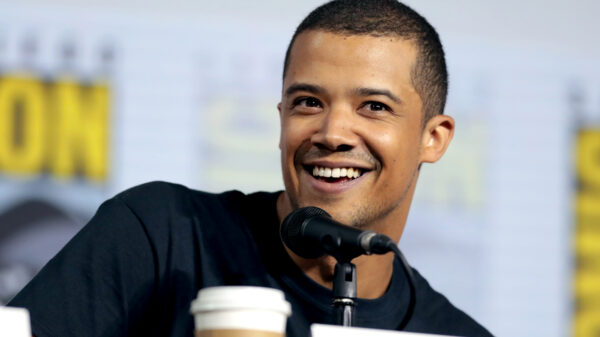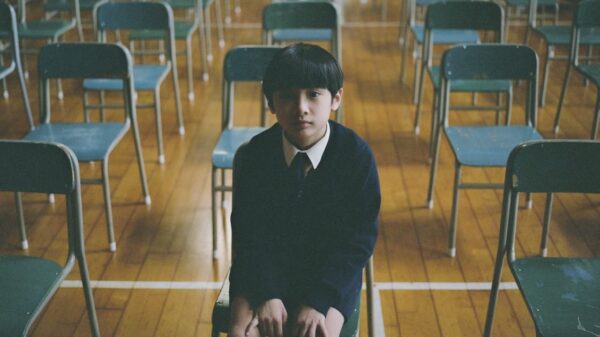Staff Writer Joe Breuer reviews both movies causing a cultural phenomenon in 2023 – “Barbie” and “Oppenheimer”.
Box office history was made this weekend for Hollywood and audiences alike at a time of deep uncertainty for the industry. Due to a break-up feud between Christopher Nolan and former studio partner Warner Brothers, both Greta Gerwig’s “Barbie” and Nolan’s “Oppenheimer” found themselves releasing on 21 July, breaking box-office weekend records and leading to the most unexpected of double-bills in the history of counter-programming. At the time of writing, a week after its release, “Barbie” has crossed $1 billion and Oppenheimer is breaking $500 million at the worldwide box office. In honour of this historic event, a joint review is in order to celebrate two towering triumphs of contemporary blockbuster cinema.
“Barbie”
When it was announced that acclaimed independent filmmaker Greta Gerwig’s next project would be a long-awaited live-action ‘Barbie’ movie it was to the surprise of many and the excitement of many more. Online speculation was rife and I am pleased to say — it is exactly as I had hoped.
We open in a symbolic “2001: A Space Odyssey” sequence, a monolithic Margot Robbie uprears her head over the desert wasteland. This is not your grandma’s ‘Barbie’ movie (although she will probably enjoy it). From this moment on, Helen Mirren as the narrator proclaims tongue-in-cheek that all feminist problems are solved. Yet, when the Barbiest of the Barbies finds herself filled with existential thoughts of dread and gooey real-world problems, she must leave behind the perfectly-pastel plane of ‘Barbie’ reality.
This was the first time in a long time that the cinema felt truly communal once again. “Barbie” is an almost carnival experience, a pastiche of astounding musical numbers and a reflective sense of humour. When people laughed, they roared. At times they found themselves silent in awe. It is Gerwig’s love of classic cinema that permeates throughout and keeps “Barbie” iconic, original, sharp-witted and highly referential. There is a bombastic gaudiness to “Barbie”‘s production design and the soundtrack is comprised of some of the best modern pop talents out there with original tracks from Dua Lipa, Charlie XCX, Tame Impala, Nicki Minaj and Ice Spice.
Surprisingly, “Barbie” is the ideologically denser of the two films released, merging some really touching moments with light feminist critique. Unfortunately, the script hits a few of the same beats a few too many times for me. Still, it is kept fresh by unrelenting charm and Robbie’s pitch-perfect pink performance. By exploring the universally feminine ‘Barbie’ world, the film touches on the masculine universal, in a way that is critical but self-aware.
“Barbie” remains a reminder that women make us stronger. People are made stronger with other people, and it is women who are some of the strongest of us all. The film certainly breaks no boundaries in its politics. In fact, despite the current discourse surrounding the film, I would argue that it could have been more challenging in its ideological approach. Upon discussion, this mostly affects the deeply emotional resolution – one I appreciated and enjoyed thoroughly but don’t fully agree with. It is a very soft approach that is totally reasonable, but I would love to have seen it push just a little bit further with some minor adjustments.
It is a very tame approach, but this isn’t to say it does not succeed in what it sets out to do – that is, to weave a pastel-coloured fable that satirises patriarchal patterns. “Barbie” goes to some really adventurous and relatively existential places at times for such a mainstream film – after all, it’s a bona fide brand advert. Gerwig gracefully finds the wiggle room. This is a surprise to no one and when it is given the chance to fly, “Barbie” soars. It is reflective, it’s irreverent, it’s smart and camp and as sincere as it is sincerely funny but above all else, it is deeply kind.
Rating: 8/10
“Oppenheimer”
Telling the real-life story of the titular physicist – the man who gave humanity the power to destroy itself and facilitated the first atomic weaponry, “Barbie” manages to stay relatively light-hearted. Jokes aside, by all accounts “Oppenheimer” is dense, and at times gruelling.
Perhaps except in “The Prestige”, Nolan is at his most subjective and elegant in “Oppenheimer”. While Nolan is somewhat known for his heavy-handedness, “Oppenheimer” allows its questions to linger and be pondered in ways not seen in his filmography. Nolan places an overt visual emphasis on the distinction between more objective moments and the film as a subjective construction, distinguished by shifts from black and white to colour. The film has a surprising spectral quality to it and this is where it is most emotionally challenging.
Nolan’s auteur-ish love of time still manages to find its way into “Oppenheimer” which flows seamlessly back and forth. The film is structured around two parallel political hearings, one labelled “Fission” and the other – “Fusion”. This structure allows the film to play with the idea of relativity – the moral kind as opposed to Einstein’s laws of quantum mechanics. This adds a clever and much-needed layer of subjective relativism. It is repeated throughout, that both these hearings are “not a trial”, and I felt as though it is the audience who is the court of Oppenheimer’s peers on his judgement day.
Despite its best attempts, I did not find “Oppenheimer”‘s moral dilemma particularly compelling, or even much of a dilemma. It doesn’t hold enough accountability to those involved and it only briefly ponders how assured destruction made America no different from its fascist enemies. We see the world from Oppenheimer’s perspective which should make this conflict compelling but since we are aligned with him as our protagonist, it becomes difficult for any debate against him to really stand out within the context of the film. This was inevitable; perhaps no amount of accountability will ever be enough for what happened (or may yet happen), but the way Nolan frames this conflict as justification for Oppenheimer’s guilt feels like a wasted opportunity.
Rather than feeling removed and emphasising the guilt over the sin itself, a more humanised approach to the Japanese victims may have helped “Oppenheimer” avoid “the glorious insincere burden of the self-important” as put by Robert Downey Jr.’s Admiral Strauss. This is something “Oppenheimer” has been scathingly criticised for. Subtlety is not where Nolan thrives as a filmmaker, and is, perhaps, what makes him so successful. Much like how “Barbie” is held back from full ambition by necessary corporate interest, “Oppenheimer” finds itself weighed down by expected self-importance.
The dialogue is an improvement on Nolan’s usual, though it does fall into the same trap as his previous films – unnatural although undoubtedly cool. What is a massive improvement is the sound mixing which is notoriously loud and surprisingly clear. On a strictly technical level, this film is textbook craftsmanship. Cinematographer Hoyte van Hoytema, composer Ludwig Göransson and editor Jennifer Lame are at the top of their respective fields and at the top of their game in “Oppenheimer”. Lame’s editing once again weaves a film together. Structured and paced to perfection like a well-oiled machine. Complex but clear.
When put in conjunction with an ever-building score of synths and classical instruments from Göransson and striking visuals from Hoytema, you have a sublime reason to go to the cinema. At times the score and fluidity of the editing can overpower the visuals, given no shot is allowed to linger. With a film so visually striking, this is a pity. However, the blend makes the non-linear and complex narrative move in a way audiences can enjoy.
The performances are all solid bricks placed upon the best possible foundation. Alongside Nolan’s direction, Cillian Murphy is at a career-high here, pouring his soul into an authentic performance that makes Robert J. Oppenheimer an unnervingly endearing figure. The other obvious standouts are Emily Blunt as Kitty Oppenheimer, who sells this character far beyond the writing she was given, Robert Downey Jr. as Admiral Strauss, Benny Safdie as Edward Teller, Jason Clarke as Roger Robb, as well as Casey Affleck and Gary Oldman’s brief but hostile appearances.
Rating: 8/10
Having watched-both films back-to-back,
I found “Barbie” to be the more entertaining of the two, not only due to “Oppenheimer”‘s difficult subject matter but also because of “Barbie”‘s dynamism and wit. Surprisingly, they are about equally thought-provoking. “Oppenheimer” beats “Barbie” in its technical skill only narrowly, thanks to “Barbie”‘s ambitious quality of production. The debatable politics of both are overpowered by their sheer spectacle.
If I should take away one thing from this monolithic day, it is that we can try to find the middle ground. A common land of celebration for all Kens, Barbies, Allens and those who came out as death (destroyer of worlds) to their parents. It was a special day brimming with movie magic and cinematic experience, where two of Hollywood’s best gave us true modern classics. I deeply enjoyed both events, they filled me with hope for the industry I love and for a better world… one that is free of nuclear weaponry and misogyny. Now, wouldn’t that be nice?
















